Preexisting infection with human T-cell lymphotropic virus type 2 neither exacerbates nor attenuates simian immunodeficiency virus SIVmac251 infection in macaques
- PMID: 20071587
- PMCID: PMC2826058
- DOI: 10.1128/JVI.01655-09
Preexisting infection with human T-cell lymphotropic virus type 2 neither exacerbates nor attenuates simian immunodeficiency virus SIVmac251 infection in macaques
Abstract
Coinfection with human T-cell lymphotropic virus type 2 (HTLV-2) and human immunodeficiency virus type 1 (HIV-1) has been reported to have either a slowed disease course or to have no effect on progression to AIDS. In this study, we generated a coinfection animal model and investigated whether HTLV-2 could persistently infect macaques, induce a T-cell response, and impact simian immunodeficiency virus SIV(mac251)-induced disease. We found that inoculation of irradiated HTLV-2-infected T cells into Indian rhesus macaques elicited humoral and T-cell responses to HTLV-2 antigens at both systemic and mucosal sites. Low levels of HTLV-2 provirus DNA were detected in the blood, lymphoid tissues, and gastrointestinal tracts of infected animals. Exposure of HTLV-2-infected or naïve macaques to SIV(mac251) demonstrated comparable levels of SIV(mac251) viral replication, similar rates of mucosal and peripheral CD4(+) T-cell loss, and increased T-cell proliferation. Additionally, neither the magnitude nor the functional capacity of the SIV-specific T-cell-mediated immune response was different in HTLV-2/SIV(mac251) coinfected animals versus SIV(mac251) singly infected controls. Thus, HTLV-2 targets mucosal sites, persists, and importantly does not exacerbate SIV(mac251) infection. These data provide the impetus for the development of an attenuated HTLV-2-based vectored vaccine for HIV-1; this approach could elicit persistent mucosal immunity that may prevent HIV-1/SIV(mac251) infection.
Figures
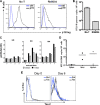
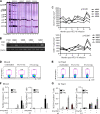
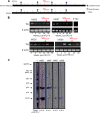
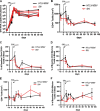
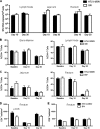
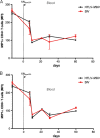
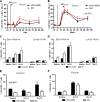

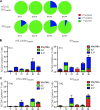
Similar articles
-
TRIM5α does not affect simian immunodeficiency virus SIV(mac251) replication in vaccinated or unvaccinated Indian rhesus macaques following intrarectal challenge exposure.J Virol. 2011 Dec;85(23):12399-409. doi: 10.1128/JVI.05707-11. Epub 2011 Sep 14. J Virol. 2011. PMID: 21917950 Free PMC article.
-
Impairment of Gag-specific CD8(+) T-cell function in mucosal and systemic compartments of simian immunodeficiency virus mac251- and simian-human immunodeficiency virus KU2-infected macaques.J Virol. 2001 Dec;75(23):11483-95. doi: 10.1128/JVI.75.23.11483-11495.2001. J Virol. 2001. PMID: 11689630 Free PMC article.
-
Occult systemic infection and persistent simian immunodeficiency virus (SIV)-specific CD4(+)-T-cell proliferative responses in rhesus macaques that were transiently viremic after intravaginal inoculation of SIV.J Virol. 1998 Dec;72(12):10029-35. doi: 10.1128/JVI.72.12.10029-10035.1998. J Virol. 1998. PMID: 9811741 Free PMC article.
-
The Hitchhiker Guide to CD4+ T-Cell Depletion in Lentiviral Infection. A Critical Review of the Dynamics of the CD4+ T Cells in SIV and HIV Infection.Front Immunol. 2021 Jul 21;12:695674. doi: 10.3389/fimmu.2021.695674. eCollection 2021. Front Immunol. 2021. PMID: 34367156 Free PMC article.
-
Cannabinoid administration attenuates the progression of simian immunodeficiency virus.AIDS Res Hum Retroviruses. 2011 Jun;27(6):585-92. doi: 10.1089/aid.2010.0218. Epub 2010 Nov 23. AIDS Res Hum Retroviruses. 2011. PMID: 20874519 Free PMC article. Review.
Cited by
-
Animal models on HTLV-1 and related viruses: what did we learn?Front Microbiol. 2012 Sep 21;3:333. doi: 10.3389/fmicb.2012.00333. eCollection 2012. Front Microbiol. 2012. PMID: 23049525 Free PMC article.
-
HTLV-1/-2 and HIV-1 co-infections: retroviral interference on host immune status.Front Microbiol. 2013 Dec 23;4:372. doi: 10.3389/fmicb.2013.00372. Front Microbiol. 2013. PMID: 24391628 Free PMC article. Review.
-
Development and optimization of human T-cell leukemia virus-specific antibody-dependent cell-mediated cytotoxicity (ADCC) assay directed to the envelope protein.J Virol. 2025 May 20;99(5):e0226824. doi: 10.1128/jvi.02268-24. Epub 2025 Mar 28. J Virol. 2025. PMID: 40152593 Free PMC article.
-
A highly intensified ART regimen induces long-term viral suppression and restriction of the viral reservoir in a simian AIDS model.PLoS Pathog. 2012;8(6):e1002774. doi: 10.1371/journal.ppat.1002774. Epub 2012 Jun 21. PLoS Pathog. 2012. PMID: 22737073 Free PMC article.
-
TRIM5α does not affect simian immunodeficiency virus SIV(mac251) replication in vaccinated or unvaccinated Indian rhesus macaques following intrarectal challenge exposure.J Virol. 2011 Dec;85(23):12399-409. doi: 10.1128/JVI.05707-11. Epub 2011 Sep 14. J Virol. 2011. PMID: 21917950 Free PMC article.
References
-
- Araujo, A., and W. W. Hall. 2004. Human T-lymphotropic virus type II and neurological disease. Ann. Neurol. 56:10-19. - PubMed
-
- Bartholomew, C., W. Blattner, and F. Cleghorn. 1987. Progression to AIDS in homosexual men co-infected with HIV and HTLV-I in Trinidad. Lancet 2:1469. - PubMed
-
- Bassani, S., M. Lopez, C. Toro, V. Jimenez, J. M. Sempere, V. Soriano, and J. M. Benito. 2007. Influence of human T cell lymphotropic virus type 2 coinfection on virological and immunological parameters in HIV type 1-infected patients. Clin. Infect. Dis. 44:105-110. - PubMed
-
- Beilke, M. A., K. P. Theall, M. O'Brien, J. L. Clayton, S. M. Benjamin, E. L. Winsor, and P. J. Kissinger. 2004. Clinical outcomes and disease progression among patients coinfected with HIV and human T lymphotropic virus types 1 and 2. Clin. Infect. Dis. 39:256-263. - PubMed
MeSH terms
LinkOut - more resources
Full Text Sources
Research Materials

